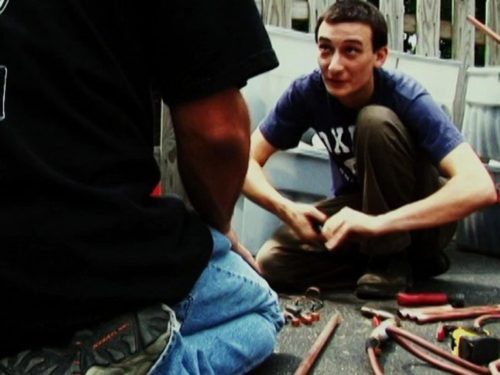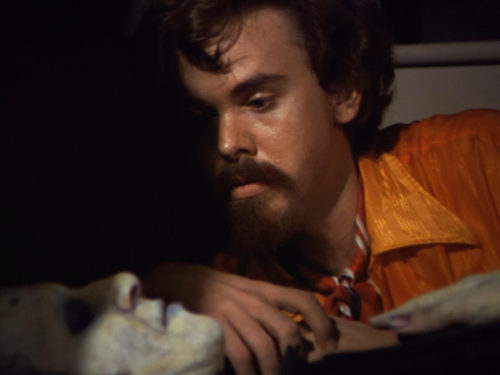An update of The McPherson Tape, Alien Abduction similarly duped audiences with home video of aliens arriving on Thanksgiving well before the found-footage boom arrived
“OK, so we saw some aliens. Can we have some dinner now?” — Linda, Alien Abduction: Incident in Lake County
Legend has it that Orson Welles single-handedly whipped up a nationwide panic with the infamous War of the Worlds faux-newscast on Halloween Eve of 1938. His commanding recitation on CBS’ Mercury Theatre on the Air ruse allegedly caused thousands, if not millions, to flood the streets in hysteria, and some to take their own lives before our new alien overlords could. But the story is a bit more complicated, of course, likely apocryphal. There is little to no evidence of a mass panic. Vivid descriptions of terrified mobs splashed across the newspaper headlines on Halloween morning have no corroboration. For one thing, the audience share of Mercury Theatre on the Air was not big enough that evening to explain the seismic impact attributed to the program. War of the Worlds went head to head with NBC’s far more popular Chase and Sanborn Hour, plus several of the largest national markets opted for local programming and did not even carry the show. In fact, the simplest explanation for this gap between reality and reputation is terribly convoluted: a hamstrung newspaper industry, reeling from the explosion of popularity of radio news and entertainment, seized on the broadcast as a way to discredit the rising medium’s credibility and maybe even stir up some federal oversight.
Related: Ghost In The Machine: Ghostwatch (1992) At 30 by Brett Wright
Neither of those things happened. But they manufactured a juicy myth and inflated the clout of one of the century’s greatest artists. Long after, the myth persists, taking on a life of its own, looming large in the collective unconscious, and snuffing the truth. So much so that, to this day, this moment in American broadcast history still carries enormous weight. You can draw a line to any number of descendants that take inspiration from this overblown sociological experiment, a genius gambit of provocation and cavalier mass-manipulation, no matter how many people actually heard it. The foundation of this tall tale is especially ingrained in the DNA of found-footage. Could you call War of the Worlds the first found-footage work? Maybe. You could make a compelling case. It certainly set the stage for what would eventually come near the end of the century.
On a comparatively microscopic scale, and with a relatively infinitesimal cultural footprint, consider another extraterrestrial-centric transmission: Dean Alioto’s Alien Abduction: Incident in Lake County, a TV movie aired on the UPN network on January 20, 1998. The story of Alien Abduction is just as complicated and twisty, but not nearly as well known. In the quarter-century since its original broadcast, it has accumulated a modest groundswell of appreciation to achieve its rightful status as both a Thanksgiving cult classic and a crucial found-footage precursor. If War of the Worlds was the beginning, then Alien Abduction was the beginning of the end. Like War of the Worlds, Alien Abduction was beamed straight into people’s homes, where they were unwittingly subjected to fake programming that was presented as factual, with little context or precedent for the audience to definitively pinpoint the true nature of the experiment. The memory of the event is laced with hyperbole. Look at how naïve people were way back when. It was a simpler time indeed. For most, it’s a blip, a memorable anomaly in the broadcast continuum. But if you happened to experience it at the right time, at an impressionable age, perhaps the impact is deeper and more lasting. Perhaps now is the right time to harvest the bounty of this oddity.
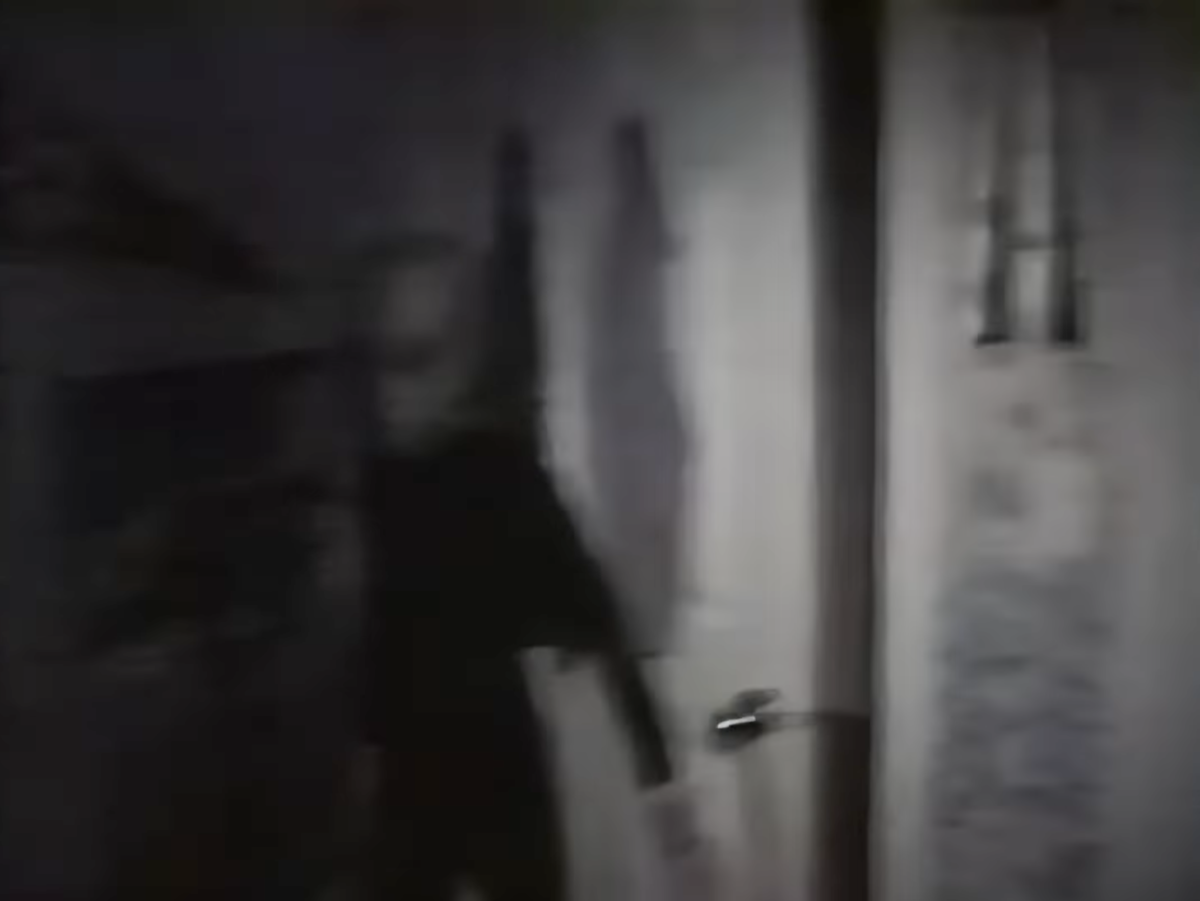
You can’t really talk about Alien Abduction without first jumping back a decade to talk about The McPherson Tape. This saga begins predictably enough, as a simple tale of an ambitious young filmmaker desperate to simply complete his first movie. The 1998 Alien Abduction is, in fact, a remake. It updates, expands, and streamlines Dean Alioto’s own feature debut, UFO Abduction from 1989, more commonly known as The McPherson Tape. Before shooting The McPherson Tape, Alioto had worked as production assistant on a handful of movies, including The Dead Pool (1988) and Indiana Jones and the Last Crusade (1989), for which he also shot behind-the-scenes stills. But he was intent on directing a feature by his mid-twenties, so, with the help of a friend who was also looking to get in the game as a producer, they decided to collaborate and get something, anything, off the ground. Trouble was, they only had $6,500 to work with. After a stroke of inspiration while driving at dusk in San Francisco — mixed with a cocktail of ideas swirling in his head from Whitley Strieber’s 1987 book Communion, Ten Little Indians, In Search of… with Leonard Nimoy, and the notorious Hopkinsville Goblins Case of 1955 — Alioto decided to turn the limitations in his favor and shoot a horror sci-fi movie about aliens and to do the whole film as if it were a mysterious home video recovered after a family’s unexplained disappearance. The result is, some have argued, including Alioto himself, the first true found-footage film, one that is, start-to-finish, the allegedly recovered footage, without embellishment, editing, or a framing device of any kind.
Shooting on a shoestring, on a consumer-grade video camera, with a cast of unknown improv actors working without a script from a rough outline of sequences, The McPherson Tape was created in a couple weeks and spliced together from two full-length takes — one half grafted onto the other. The film takes place over the course of one fateful evening as a family is gathered for five-year-old Michelle’s (Laura Thomas) birthday party. The family sits around the table after finishing the meal and they converse about what’s going on in their lives, with some casual antagonizing, as families do. Michael (Alioto), the youngest brother, has a new video camera and is filming the party. Suddenly the power goes out. Michael and his two older brothers, Eric (Tommy Giavocchini) and Jason (Patrick Kelley), go out to check the fuse box. They see a streak of light across the sky and decide to investigate. After an extended trek through the woods, they discover what appears to be a spacecraft. Three alien figures emerge from the craft and spot the brothers. They flee back to the house and report the events to the others. From there, a series of strange, tense events take place in the house, with the brothers wielding shotguns to protect the homestead as the creatures corner the family. One of the beings is shot and stashed in the house. Eric and Jason try to leave and get help but never return. As the rest of the family waits in hopes that they will return, the aliens infiltrate the house and the tape cuts out.
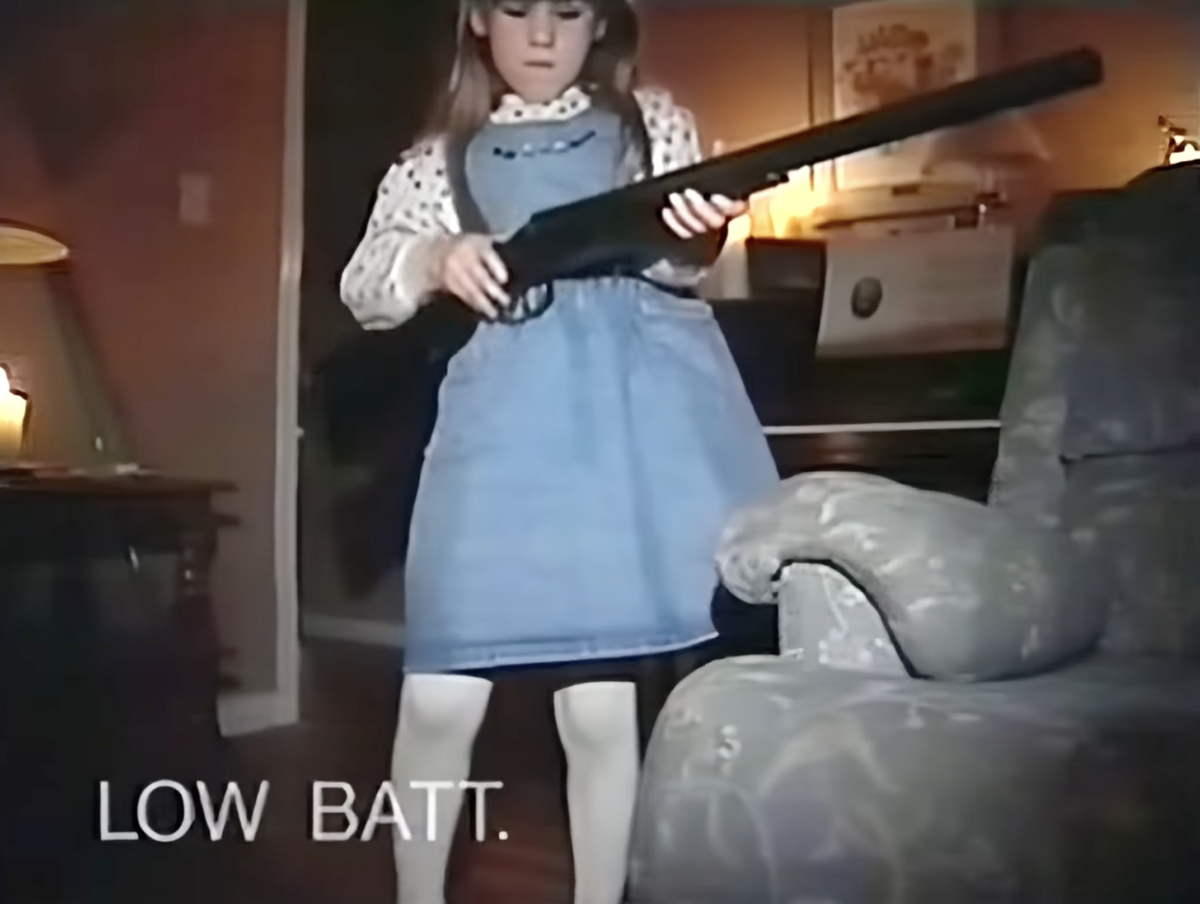
By Alioto’s own account, The McPherson Tape seemingly died on the vine. After unsuccessfully shopping the movie around, Alioto finally hit on a distributor eager to take it on. He handed over all the masters and promotional material. When he checked back months later, he was shocked to hear that the warehouse where the film was stored had burned down and that his movie was gone. It isn’t until a few years later that Alioto is approached by an acquaintance who heard he may have information about a tape he’d gotten hold of. Lo and behold, in the ensuing years, a good deal of mystery had accumulated around the handful of tapes that, unbeknownst to Alioto, had survived and made their way to independent video stores. Apparently, somewhere along the line, the end credits had been edited off and the quasi-viral video tape had been passed off as the genuine article, an actual found-footage tape found in the aftermath of a mysterious disappearance and leaked from government files. More importantly, the tape had made its way into the UFO experiencer community, and had screened at conventions and been independently authenticated by popular figures, including UFO researcher Tom Dongo and retired lieutenant colonel Don Ware. All this burnished the film’s mysterious aura beyond Alioto’s control.
Related: Frank Mosley’s Teenage Alien Epic Invaders From Venus! (2003)
Flash forward a few more years and Alioto is working on a network TV show. The program’s head writer catches wind of The McPherson Tape and approaches Alioto to get a copy of this underground film he’d heard so much about. After viewing it, he tells Alioto they can spin this into a deal, so they shop around the concept and it’s eventually picked up by Dick Clark Productions. Alioto secures a bigger budget, professional actors, and even the effects team from The X-Files to create the aliens and their spacecraft. They once again shoot it run-and-gun, with a roughed-up look, long takes, improvisation, and restrained effects work. It eventually became the first TV movie from upstart network UPN, airing on the network in January 1998 immediately following Real Vampires: Exposed! Alien Abduction: Incident in Lake County, as it came to be called — against Alioto’s wishes — follows more or less the same plot. Significantly, the ’98 version changes the location from Connecticut to Montana and the scenario from a birthday party to a Thanksgiving dinner.
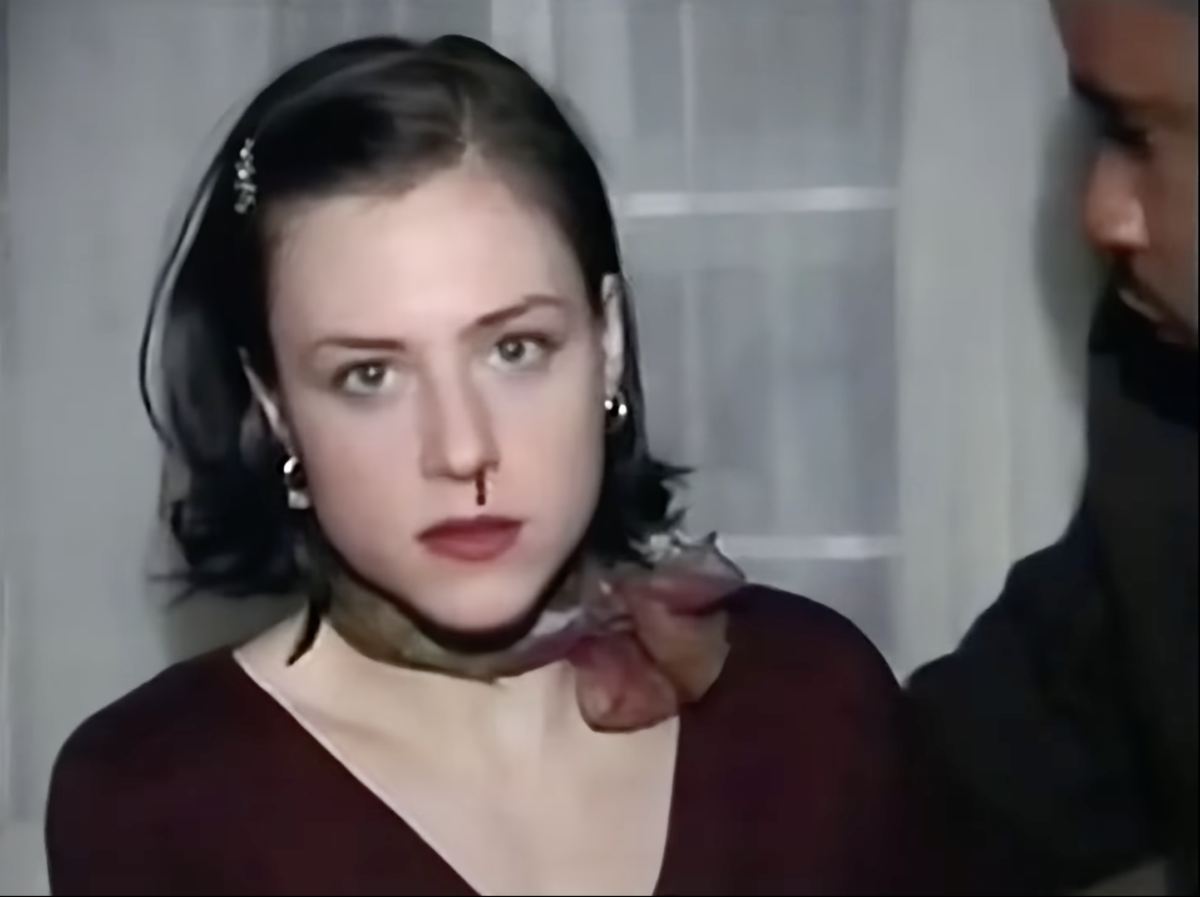
The movie begins with a picturesque, wholesome family tableau: mom (Gillian Barber) teaching her granddaughter, Rosie (Katlyn Ducharme), “Chopsticks” on the piano; brothers — Tommy (Kristiane Ayre), the youngest, wielding the camera, eldest sibling Kurt (Aaron Pearl), and Brian (Michael Buie) — are hassling each other while putting the finishing touches on the Thanksgiving meal; and the women — Michael’s girlfriend, Renee (Emmanuelle Chriqui), and Kurt’s wife, Linda (Ingrid Kavelaars) — are keeping the peace. Then cracks start to emerge in the pan-and-scan Norman Rockwell portrait: the siblings are trying to care for their mother but come up short as they avoid confronting her alcoholism, which has worsened since their father died; one sibling, Melanie (Marya Delver), is missing from the picture, showing up late with her date, Matthew (Benz Antoine), who is given a chilly, bigoted reception from Kurt; and Michael and Renee are off having sex in the bathroom just as the meal is being served. Again, as in Alioto’s original, the power cuts out and the brothers venture out to check the fuse box when they come across alien beings (Ginny Kleker, Kay Parten, and Rose Schneider) — yes, they were credited — doing strange, unsavory things to livestock. They are spotted and run back to the house, and the remainder of the film follows the siege as the tension and danger escalates. The beings infiltrate the house, one is injured and captured, people start to behave erratically and against their will. The two oldest brothers leave to get help but never return. Eventually, everyone gathers around the table to play Go Fish before the aliens methodically enter and the footage abruptly glitches out.
In the aftermath of Alien Abduction’s airing, a familiar pattern started to emerge. There was a regime change at UPN and, despite robust viewership numbers, the TV movie was buried in the vaults. It still hasn’t received a proper release. But unlike the old-school tape sharing that turned The McPherson Tape into a cult object, Alien Abduction achieved some semblance of early internet virality to stoke its urban legend. The movie was also inexplicably broadcast, once again without context and with end credits edited out, in New Zealand on TVNZ Channel 2. The conditions were clearly right for found footage to explode, and Alioto’s Abduction binary charts the decade-long buildup. We often talk about The Blair Witch Project (1999) — which notably arrived a full decade after The McPherson Tape and a year after Alien Abduction — as a beginning, as the dawning of the turn-of-the-century found-footage craze. But in a sense, it also marks the end. It would be the last time that a movie, or, really, a movie marketing campaign, could trick us so completely and convince us that this is indeed found footage, recovered and mysteriously reassembled following some actual, inexplicable tragic happening, a transmission exposing some hidden truth embedded within our lived reality. It marks the advent of overwhelming skepticism that has become a frequently insidious part of our everyday lives. Alien Abduction is the barometer dropping before the storm.
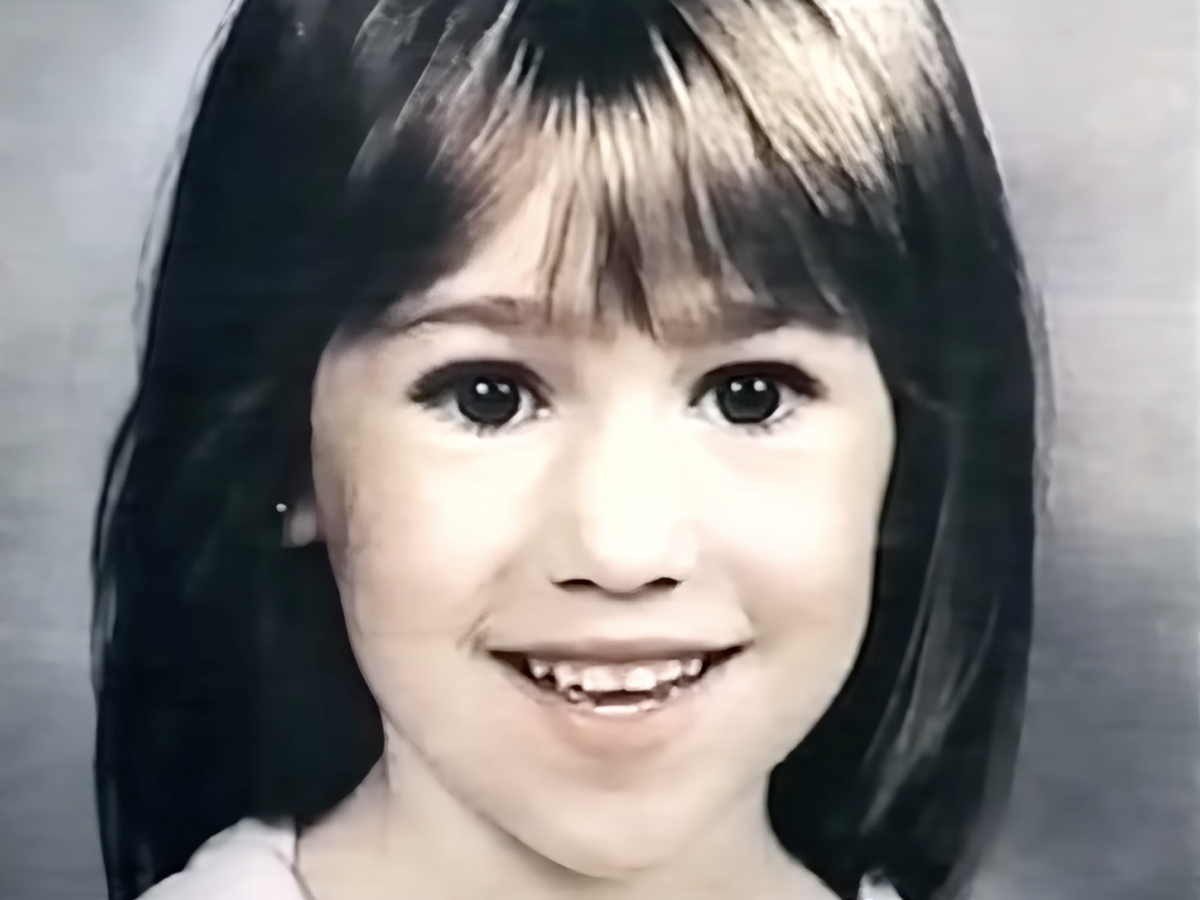
As it stands, these two movies are a portrait of the artist whose career is swept along by forces outside of himself. What’s incredible about the saga is that Alioto pulled off a found-footage scheme not once but twice before the boom even began, and still these key twin texts exist in relative obscurity, destined to live in the shadow cast by The Blair Witch Project and everything thereafter. If Alioto had his way, there would actually be three versions of this story; he even wrote a spec script that was picked up before the production company folded. The first, The McPherson Tape, is a snapshot of the misadventures of a precocious upstart working with what he has and striking gold. The hallmarks that are now inextricable from the found-footage subgenre are mostly there from the beginning: the shaky cam, the dead air, the circuitous, sometimes unconvincing improvised conversations, obscured visuals, reams of dialogue that are essentially characters just shouting other characters’ names over and over into a void, etc. The McPherson Tape is already self-conscious and self-aware. Characters repeatedly tell Alioto (as Michael) that enough is enough with the damn camera and to stop recording them. It’s harder to see now, but in the early days, you have to admit it takes a certain kind of moxie to lay something this rough to tape and call it finished. It’s like pseudo-outsider art made by a dyed-in-the-wool industry lifer.
The second stab is the work of a more seasoned industry professional recreating a document from his youth. It’s more polished, propulsive, and choreographed, with professional actors Alioto later deemed too good-looking to be convincing in a found-footage sense. The main complaints that would begin to dog the subgenre in subsequent years — of poor sound quality, hacky visual effects, and low-standard aesthetics — were already in-jokes for Alioto and in the process of getting worked out and smoothed over. “You can’t even hold that thing steady,” Michael says to Tommy, ribbing him about his camerawork. “It’s supposed to look like that,” he replies. Alien Abduction actually functions like a horror movie, with structure and sequences, setups and payoffs, tension and release, an inciting incident and escalation through an inevitable, eerie final act and conclusion (which was originally just aired in Europe). Still, the long takes give it a shagginess that is noticeably out of step with primetime network TV programming, with plenty of dead spots where you can feel the outline stretching and sagging. It shows Alioto building on his own work, adding new thematic avenues into it, and expanding the style of the gimmick he stumbled upon, creating a more adventurous, immersive take on what Alien Autopsy: Fact or Fiction? (1995) had attempted a few years earlier. In its way, the film inadvertently gestures at where the nascent subgenre was heading: into the mainstream of popular culture.
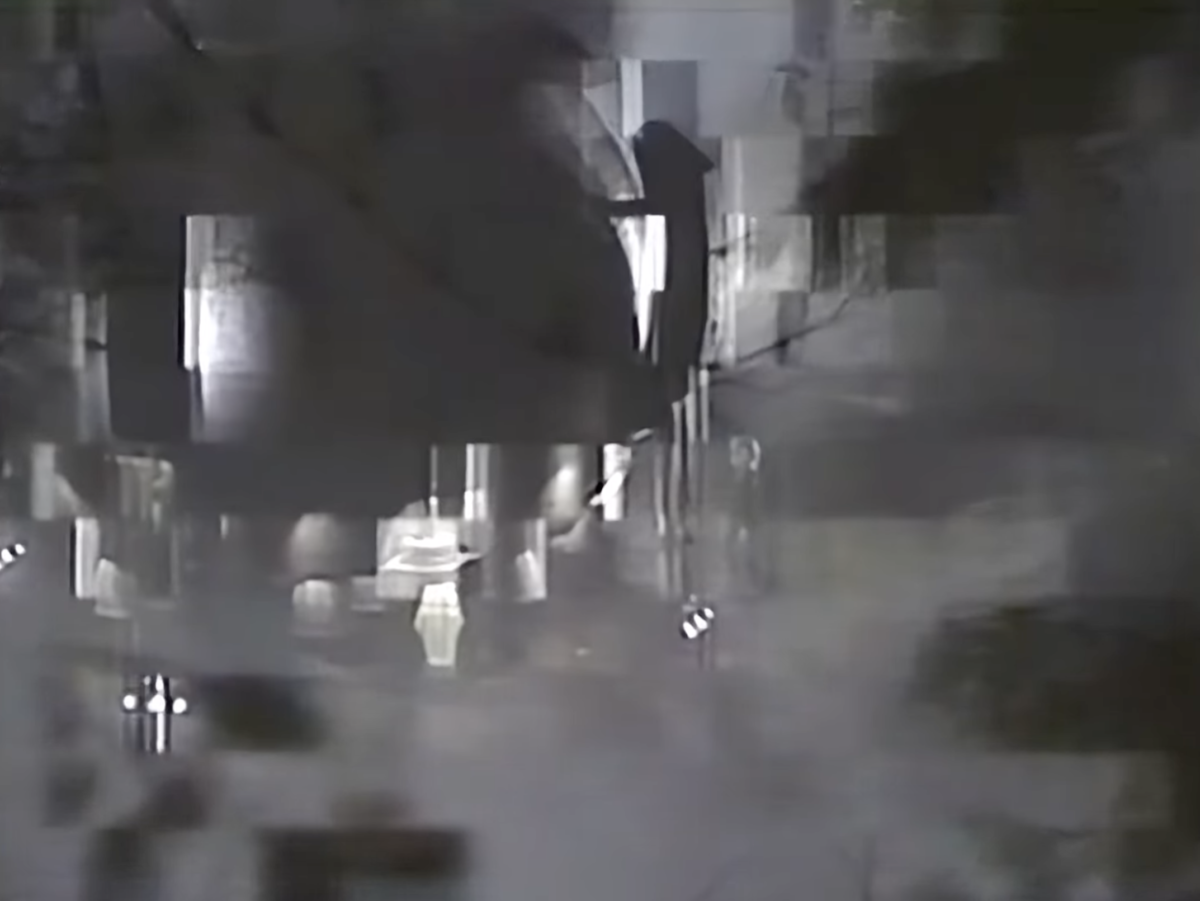
Alioto’s relationship to these movies has shifted over time. He was vaguely embarrassed about The McPherson Tape for years after, chalking it up to a rough-hewn youthful experiment built on a gimmick. Now, he speaks of it in more glowing terms. Ironically, he is quick to dismiss Alien Abduction, calling it a failure when speaking of its stylistic integrity. He laments deviating from the lo-fi ethos of the original. The McPherson Tape even got a fine Vinegar Syndrome release, under the aegis of the American Genre Film Archive, in 2020 whereas the UPN TV movie is just twisting in the wind, existing only through secondhand leaks. But there is much to recommend and admire about Alien Abduction and it arguably has a bigger following considering the reach of its original broadcast. Even with the scripted dialogue, harsh lighting, buttoned-up actors, and digital aesthetic, the film still worked: People believed. That’s a ripe legacy to dissect, especially with all the meddling and concessions, not in spite of them. Alien Abduction imprinted itself on the minds of a susceptible viewing public because it is such a departure from what we have come to expect from broadcast television. In that respect, it’s a clearer descendent of Welles’ War of the Worlds, successfully manipulating a predictable format with devious intent. And the switch to Thanksgiving is a masterstroke.
The number of Thanksgiving horror films is relatively slim. It occupies a strangely undefined place between Halloween and the December holiday blitz. It’s a bit of an overlooked holiday in the realm of horror, perhaps the next bastion. Maybe Alioto was ahead of the curve on that, too. As a secular holiday, albeit with latent genocidal, post-colonial subtext, Thanksgiving rituals are less exaggerated and intense. It’s a major holiday but it’s also a transitional holiday, kind of a dry run for the true season that begins immediately after. It’s also in constant threat of being overtaken, with Christmas edging more firmly into the Halloween orbit with each passing year. Thanksgiving, our most carnivorous festival, is a truly American holiday with an uneasy balance of motifs: gratitude and gluttony, togetherness and tension, and generosity and consumerism. We don’t exchange gifts or sing or decorate. We reunite, watch parades and sports on TV, and then we feast like there’s no tomorrow. In Alien Abduction, the family keeps finding themselves back at the dinner table. It’s a place of refuge and communion, where they hash out plans and comfort each other through a traumatic experience. It’s where we last see them together in one final moment of unity before they accept the inevitable and are taken captive by invaders with unknowable intentions. Because the aliens are a mostly unseen, implied threat throughout, the film is really focused on the infighting and shifting allegiances among the family unit, how their bonds are tested in the crucible, and how long-simmering tensions inform the decisions that are made. What could be more Thanksgiving than that?
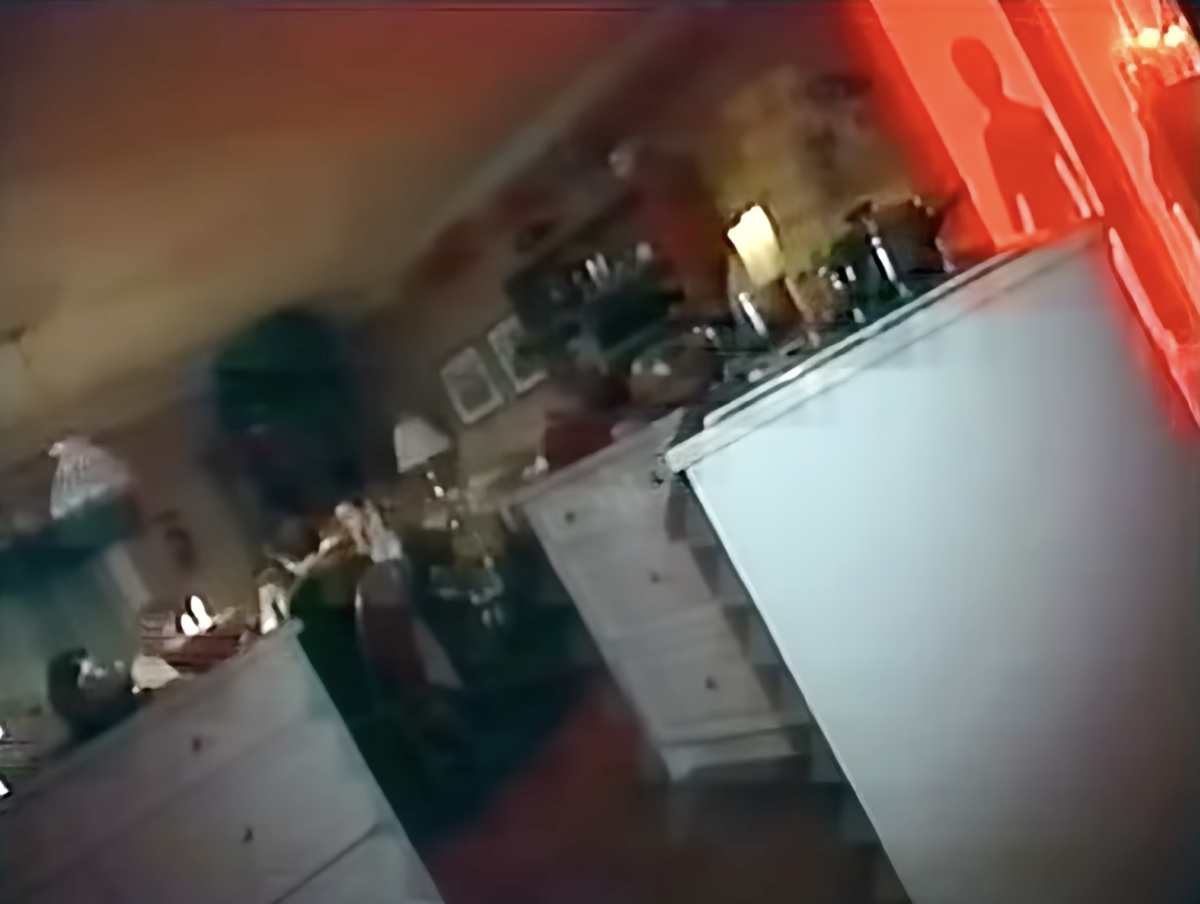
The concept of an invasion is a pretty potent, loaded idea when applied to a holiday with such heavy colonialist overtones. It’s also fascinating how both movies default to a shoot-first mentality, with Alien Abduction burrowing deeper into the American heartland. It’s taken as a given that the very appearance of something strange and inexplicable emerging from the forest immediately leads to violence, shotgun blasts, and panic. All of this, this besieged Americana, is shrouded in an autumnal haze, aglow in nostalgia, the home-video quality giving it the feel of a fading memory. Animated by its tacky late-’90s flavor, Alien Abduction’s timestamp harkens to the twilight of the monoculture of the 20th century where monolithic holidays held greater sway over American life — or so we’d like to remember. It’s decidedly a United Paramount Network product, its kitschy aesthetic emblematic of overripe 1990s tastes. In its way, Alien Abduction points to the inevitable decline the next century would bring, which found footage would depict and abstractly articulate.
Now there’s a feeling in the air, a doomed feeling, like there are tears in the very fabric of reality. It’s as if the end is nigh, and at some point in the not-too-distant future, we’ll touch the singularity. With artificial intelligence looming and dominating headlines, and people playfully, ominously futzing with ChatGPT, we know in our hearts that the gap will continue to close. With a flood of deep fakes on the horizon, Alien Abduction: Incident in Lake County looks more and more like a document of the end of the before time. It’s worth remembering this era of relative naïveté as we stare down a new, far more sophisticated era of misinformation. After Blair Witch, the jig was up. What was once a diffuse subgenre shrouded in mystery has been debunked, codified, and centralized into a coherent, recognizable, replicable style. There’s a twinge of nostalgia for a simpler time when these strange documents could still strike a primal nerve without all the baggage — its pleasures and pitfalls remarkably quaint. Stuff like this used to have a prankster edge to it. We’re living in a world beyond the point of no return where fact and fiction dissolve at a microscopic level. This is the horror Alien Abduction embodies and anticipates. What was once lightly provocative and impish, even artistically admirable, is now dangerous and dystopian.
Stay up to date with all things Split Tooth Media and follow Oliver on Twitter
(Split Tooth may earn a commission from purchases made through affiliate links on our site.)


